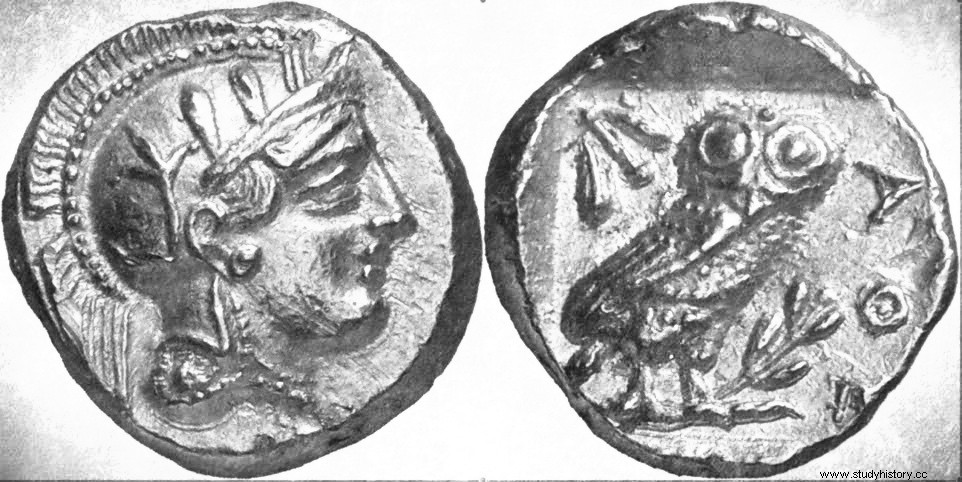In 431 B.C. the Peloponnesian War broke out, the largest war that had raged in Greece until then, as the Greek historian Thucydides assures U.S. On one side of the battleline stood democratic Athens and its allies and on the other side of the battleline stood oligarchic Sparta and its allies. An extremely rare example of Athenian gold coinage dates from the last phase of this Peloponnesian War:a gold stater.
The Peloponnesian War

The alliances at the start of the Peloponnesian War in 431 BC.
After the repulsion of two major Persian invasions (492-490, 480-479 BC), Athens experienced a great cultural and economic boom, which was partly based on the income that the city withdrew from the Delian-Attic Sea League. Originally, the Delian-Attic League was founded in 478 BC. established to ensure that the Persians would pose no further danger to Greece. Athens, however, soon came to dominate the League of the Sea, and the financial contributions of the other members served – much to their dismay – to fill the Athenian war chest and beautify the city. Sparta and its allies, however, saw this Athenian expansionism with dismay.
For a good thirty years, Athens and Sparta fought a bitter war. The Athenians in particular had a hard time. Pericles's strategy , who was the chief statesman of Athens at the outset of the war, consisted in withdrawing the population behind the city walls, while battling the Spartans with the superior Athenian fleet. The Athenian countryside, however, faced repeated Spartan raids, and to make matters worse, in 430 B.C. a terrible epidemic in the overcrowded city, which would eventually succumb to Pericles too. Yet the Athenians did not give in. A disastrous expedition to Sicily between 415 and 413 BC. however, heralded the beginning of the end. The Spartans increased the pressure, and once they succeeded in cutting Athens off from the silver mines in Laurion, the city soon fell into financial distress.
Gold and bronze
In 407-406 B.C. the situation became so dire that Athens was no longer able to produce silver coins. To further pay for the war, Athens started minting gold coins for the first time in its monetary history. Very special about these coins is that we know exactly where the gold comes from. After all, there were eight statues of Nikè . at the Parthenon , the goddess of victory, who were clothed with gold. The gold was removed from seven of the eight statues and melted down. However, this act of desperation was not enough, as a short time later the city began minting silver-coated bronze coins:πονηρὰ χαλκία , "worthless bronze coins", as the comedy writer described Aristophanes them.
The coin below is anything but a worthless piece. This is an extremely rare example of the Athenians' gold coinage during the Peloponnesian War. On the front is Athena, the patron goddess of the city and also goddess of war. On the reverse is an owl with an olive branch, both symbols of Athena. The legend is ΑΘΕ , an abbreviation for AΘΕΝΑΙΩΝ , or 'of the Athenians'.

Gold Athenian stater, struck ca. 407-404 B.C. (drawn reproduction)
Expiration
The Athenian efforts were to no avail:in 405 B.C. the Athenian fleet was finally defeated at Aegospotami, in 404 BC. the city surrendered. The Spartan general Lysander installed an oligarchic regime, the so-called Thirty Tyrants, who railed against their political opponents. Democratic-minded Athenians soon overthrew their new rulers in a revolution (303 BC), but Athenian power would never fully recover.
